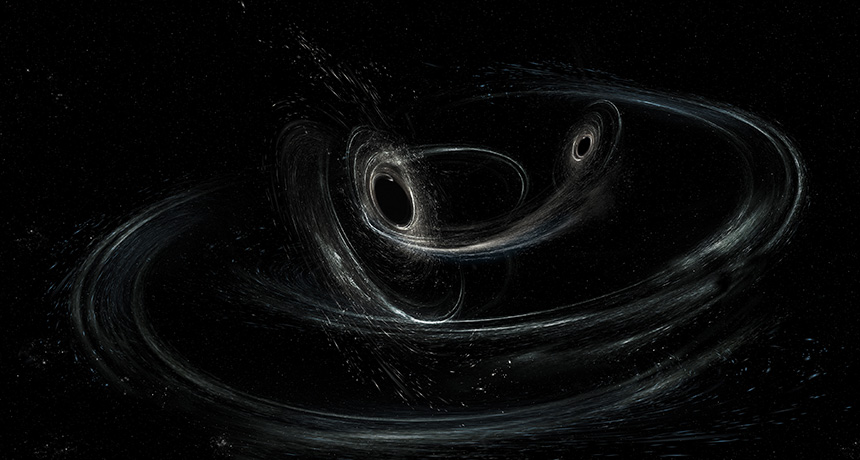Swift kick from a supernova could knock a black hole askew
Gravitational wave detection hints at unexpected power from star explosion

TILT THE BALANCE Black holes that orbit one another can have tilted spins (illustrated here, in an image of the third set of black holes LIGO detected). In LIGO’s second detection, the tilt of one black hole suggests it may have been kicked askew by the stellar explosion that created it.
AURORE SIMONNET/SONOMA STATE, MIT, CALTECH, LIGO







